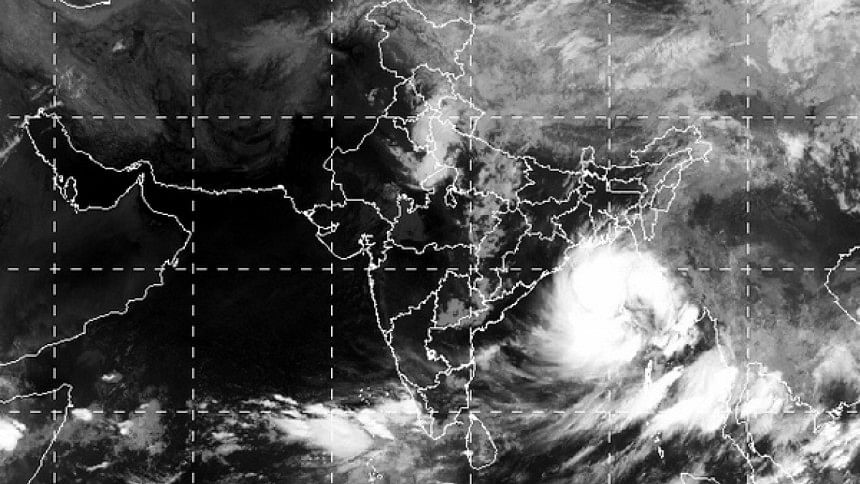How we can prepare ourselves for cyclones

Cyclone Mora, as of yesterday, started showing signs of weakening in Chittagong and is expected to reduce to a depression as it moves in a northerly direction. It began crossing Chittagong-Cox's Bazar coast yesterday at 6 am. Maritime ports of Chittagong and Cox's Bazar have been advised to hoist danger signal number ten while Mongla and Payra ports have been advised to hoist signal number eight. At least five people died as Cyclone Mora crossed the coast of Chittagong.
The Bay of Bengal, unfortunately, is a focal point of cyclone generation. About 40 percent of the overall global storm surges are recorded in Bangladesh Tropical cyclones from the Bay of Bengal accompanied by storm surges are one of the major hazards in Bangladesh. They occur mainly in April/May and October/November. The country is one of the worst sufferers of all cyclonic casualties in the world.
Rendering to the Coastal Zone policy (2005) of the Government of Bangladesh, 19 districts, out of a total of 64, covering a total of 147 upazilas, are in the "coastal zone". Cyclones and storm surges are a continuous threat for the coastal population. Most of these cyclones strike land on the Bangladesh coast or the coast of Myanmar and India.
In 1970, the Cyclone Bhola caused about 500,000 deaths in Bangladesh's coastline. On April 29, 1991, a powerful cyclone struck the coastal area of Bangladesh with wind speed of around 250 km/h. The storm killed at least 138,000 people leaving as many as 10 million homeless.
On November 15, 2007, Cyclone Sidr hit the coastal area of the country, affecting approximately 8.5 million women, men and children and killing around 4,000 people. One and a half million homes were partially or completely destroyed, around 1.2 million livestock were killed and 2.4 million acres of crops were ruined. The overall economic losses amounted to USD 1.7 billion.
On May 25, 2009, the cyclonic storm, Aila, hit the southwestern part (Khulna Division), killing approximately 190 people. Several hundred thousand homes were washed away when wind-driven tidal surges up to 3 metres devastated the coastal belt. Cyclone Aila hit 14 districts in the south, affecting a population of around 3.7 million people. The cultivated land damaged in the area was around 96,617 hectares and the loss in the production amounted to around 482,144 megatonnes worth Tk 6,776 million (around USD 99 million).
Over the last three decades, particularly under the democratic governments, Bangladesh has invested in disaster management and gained some capabilities to manage cyclones. However, the people inhabiting hazardous coastal areas, particularly the poor, still live with extreme uncertainties, risk and vulnerabilities. Considering our history, capacity, risk and vulnerability to cyclones, concerned organisations and authorities need to come up with appropriate strategies and emergency actions to be taken when and if Cyclone Mora intensifies.
An effective emergency management encompasses measures—taken before a disaster —aimed at minimising loss of life, interference of critical services, and harm when the disaster occurs. Prior to a cyclone, a contingency plan provides the basis for identifying and further developing response capacity. It is important to prepare/revisit contingency plans in all the administrative layers of a coastal area, keeping in mind the provision of necessary resources and its effective management. Strengthening emergency medical facilities across the vulnerable locations of the coastal belt to treat fatalities in time is an important area of intervention.
The nets of embankments in some areas are vulnerable to cyclones and storms. The current embankments, dams, dikes and other infrastructures have to be critically reviewed and special steps taken to rescue the most vulnerable and protect their assets.
The early warning system provided by the government in advance of recent cyclones facilitated the successful evacuation of coastal communities resulting in fewer than expected deaths. Though there have been improvements in warning systems, some gaps in pre-cyclone evacuation still remain. Instead of moving to cyclone shelters, some people in coastal areas still follow a wait-and-see approach due to various reasons. Prompt action is needed by respective authorities and duty bearers to shift vulnerable people to safer places of the coastal region. Appropriate allocation, rapid flow of funds, technical support, effective monitoring and supervision of activities should be ensured by authorities responsible at each stage. The role of local governments and communities at the different stages of the disaster management plan needs to be emphasised, supported and ensured by authorities.
Nobody can prevent cyclones but their impact can surely be reduced. The respective authorities at different levels should ensure that their initiatives are aligned with standing orders on disasters (SoD) of the government. And on a final note, inventiveness at various stages of governmental, non-governmental and community levels is the main element in reducing cyclone-related mortality and losses.
The writer is a disaster risk reduction and climate change adaptation expert, and a development lawyer.

 For all latest news, follow The Daily Star's Google News channel.
For all latest news, follow The Daily Star's Google News channel. 



Comments